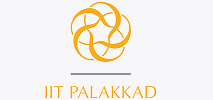Course Title and Code
Sensors and Signal Conditioning Circuits (EE5525)
Programme
M.Tech
Course Credit
3-0-0-3 (Lecture-Tutorial-Practical-Total Credits)
Course Category
PME
Prerequisite Course
Elementary knowledge of analog and digital circuits; measurements and instrumentation
Consent of Teacher
Yes
Course Content
| Sl. No. | Topic | Lecture (hours) |
|---|---|---|
| 1 | Introduction: Measurement Systems: classification and terminologies, importance of measurement and monitoring physical parameters, sensors and transducer, generalized performance characteristics. Passive and active transducers: definition. | 2 |
| 2 | Resistive sensors and interfacing circuits: Resistive potentiometer– noise, resolution; Strain gauges– associated electrical circuitry, temperature compensation, load cells– torque and pressure measurement using strain gauges. Resistance thermometers, threelead arrangement, thermistors– linearization. Hotwire anemometers– measurement of flow, resistance to digital converters. | 11 |
| 3 | Inductive sensors and interfacing circuits: General factors governing the design of inductive transducers– sensitivity and nonlinearity– Associated bridge circuits –choice of components, magnetoresistors, Halleffect devices, integrated Hall devices, fluxgate sensors. VariableReluctance Sensors, Mutual inductance change type, Linear Variable Differential Transformer (LVDT) – Expression for mutual inductance variation – null voltage – lead and lag networks – applications of LVDTs. | 9 |
| 4 | Capacitive sensors and interfacing circuits: Various configurations sensitivity and nonlinearity factors, signal conditioning circuits– capacitance to digital conversion using microcontroller, dual slope and sigma delta techniques, noise analysis of interface circuits; Challenges of electronic interface circuit for measuring sensor capacitance in presence of parasitics. | 9 |
| 5 | Active transducers: Definition– General type pickups, thermocouples– Piezoelectric sensors – use of charge amplifiers with piezoelectric sensors. | 4 |
| 6 | Instrumentation system: Instrumentation system for measurement of nonelectric quantities like displacement and velocity, acceleration, force, pressure, sound flow and temperature. Sensor systems and applications: automotive, consumer, power and medical measurement systems, Electrodynamic and Seismic sensors, Sensor based Internet of Things (IoT) applications, SensortoFrequency Conversion. | 7 |
Learning Objectives
This course deals with the underlying principles and performance characteristics of sensors used in various industrial and scientific applications. Through this course, students will get an insight into the different techniques involved in designing interfacing circuits for sensors. The course will focus on the latest developments in the area of sensors and signal conditioning approaches. From an application perspective, this course will provide an insight into the operation of some of the sensors and actuators in automotive, medical, and industrial systems.
Learning Outcomes
- Understand the principle of operation of different types of sensors.
- Design the interfacing circuits and digitization for these sensors.
- Analyse, formulate and select the right sensor for a given application.
- Develop and evaluate measurement systems for industrial and scientific applications.
Teaching Methodology
Classroom lectures
Assessment Methods
Written examinations/quiz, continuous assessment
Text Books
- PallasAreny Ramon, John G. Webster. Sensors and signal conditioning. New York: Wiley, 2001.
- K. Neubert, ‘Instrument TransducersAn introduction to their performance and design’ Oxford University Press, Oxford, Second edition2003.
- E. O. Doeblin ‘Measurement Systems – Application and Design’ McGraw – Hill Publications, Fifth Edition, 2004.
References
- De Silva, Clarence W. Sensors and actuators: Engineering system instrumentation. CRC Press, 2015.
- Ripka, Pavel, Alois Tipek, eds. Modern sensors handbook. John Wiley & Sons, 2013.
- Khazan, Alexander D. Transducers and their elements: design and application. Prentice Hall, 1994.
- Fraden, Jacob. Handbook of modern sensors: physics, designs, and applications. Springer Science & Business Media, 2004.
